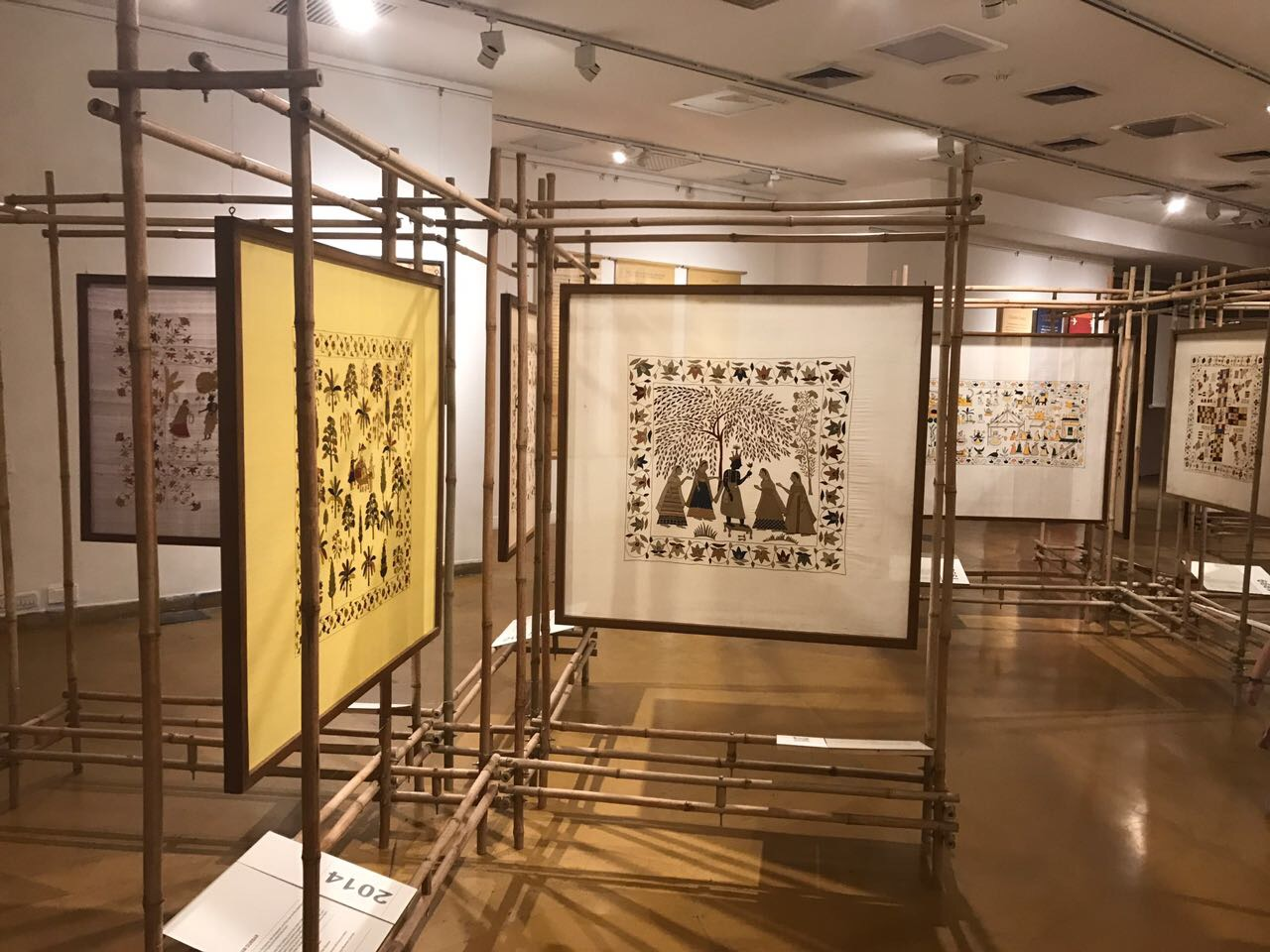Embark on a journey to discover the enchanting world of Chamba Rumal embroidery, deeply rooted in the lush valleys of Himachal Pradesh, India. This captivating art form serves as a living testament to the region's rich cultural heritage, weaving a story of tradition and craftsmanship that has withstood the test of time.
Unearthing the Origins
The Chamba Rumal is a ceremonial cover with a rich history steeped in culture, craftsmanship, and revival. The very term 'Rumal' itself whispers of Persian influences, symbolising a 'kerchief' – a square piece of fabric that often adorned heads or graced necks. Typically, this artistry unfolded upon unbleached muslin or the rustic charm of Khaddar fabric.
Its origins date back to the 16th century when Bebe Nanaki, sister of Guru Nanak, created one that is currently housed in the Gurudwara at Hoshiarpur. Another Rumal, gifted by Raja Gopal Singh in 1883 with an embroidered scene from the epic Mahabharata's Kurukshetra War, can be found at the Victoria and Albert Museum in London.
In the 17th century, the women of the princely state of Chamba, now part of Himachal Pradesh, began embroidering these Rumals, often as part of marriage gifts or dowries for their daughters.
This embroidery technique, inspired by Kashmir and further enriched with themes from Chamba's unique Mughal miniature paintings, thrived in the 18th and 19th centuries. As the Mughal empire waned, skilled artists migrated to the hills of Himachal Pradesh, where they found patronage from Raja Umed Singh of Chamba.
However, it has been commercialized and flooded with cheaper imitations in the marketplace since losing the patronage of royalty following India's independence.
Revival Efforts
In a bid to revive this ancient art form, Usha Bhagat, a close associate of Indira Gandhi, took the initiative in the late 1970s. The DCC (Development Commissioner for Handicrafts) located original designs from museums and collections, and women artists were trained in this intricate craft. This effort led to the recreation of 16 designs and the restoration of quality.
Lalita Vakil played a pivotal role in this revival, earning the Nari Shakti Puraskar award for her tireless efforts. In 2018, she received this prestigious award at the Presidential Palace, presented by the President of India.
Embroidery Techniques
Captivating Designs
These Rumals serve as intricate canvases for a plethora of themes, each narrating its own story. Among them, the 'Ras Mandal' takes centre stage, capturing the essence of Chamba Rumal with its depiction of hunting and wedding scenes, Nayika-Bheda, the Shiva family, Vishnu's Dasavatara, and stories from the Bhagvata Purana. Every piece boasts a unique cultural and artistic significance, breathing life into a narrative of its own.
A Global Treasure
The fame of Chamba Rumal extends far beyond the borders of India, capturing the hearts of art enthusiasts and collectors worldwide. Recognizing its profound cultural importance and extraordinary craftsmanship, UNESCO bestowed the prestigious title of World Heritage status upon Chamba Rumal on October 31, 2008.
Cultural Significance
Ceremonial Uses
Chamba Rumals were traditionally used in weddings and other auspicious occasions. They served as a symbol of the region's rich cultural heritage and added grandeur to these events.
Heritage Preservation
Today, Chamba Rumal embroidery is not just an art form; it is a legacy passed down through generations. Efforts are being made to preserve and promote this heritage craft, ensuring it continues to flourish.
Conclusion
In a world where tradition often gives way to modernity, Chamba Rumal embroidery stands as a testament to the enduring beauty of heritage crafts. Its intricate designs, rich history, and cultural significance make it a truly exceptional art form. As we continue to celebrate and preserve this legacy, Chamba Rumal's timeless charm will shine brightly for generations to come.







Post a Comment